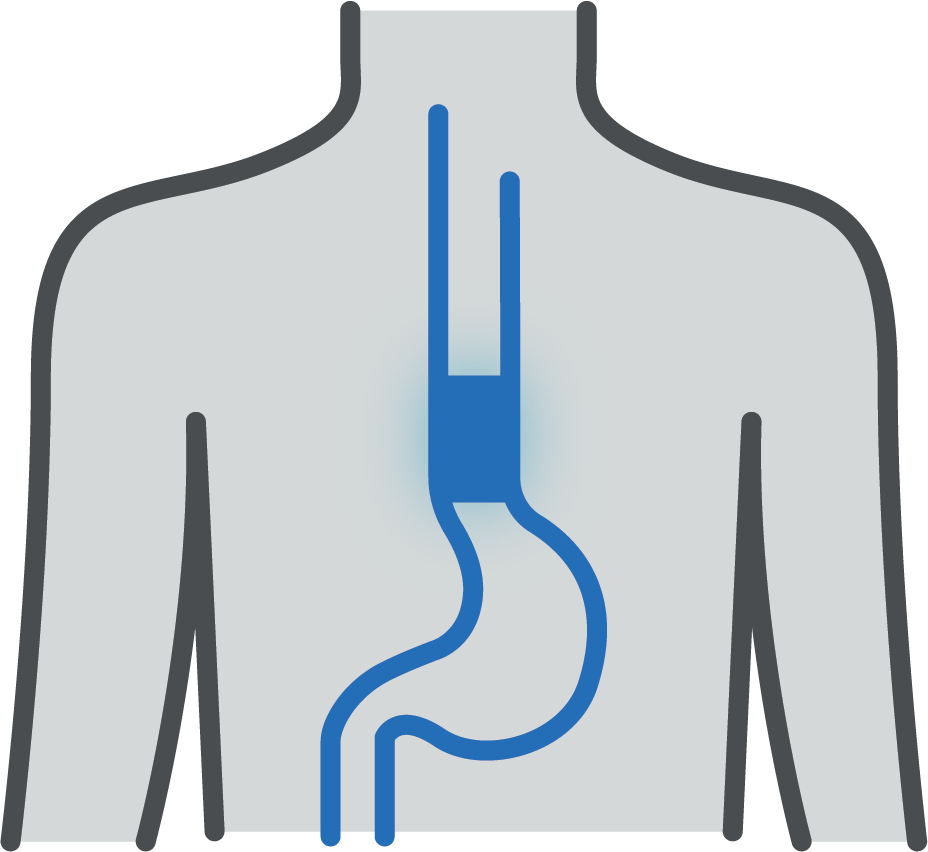Barrett’s Esophagus
Conditions

Barrett's esophagus (BE) is a condition that may result from long-term gastroesophageal reflux disease (GERD), commonly referred to as acid reflux. Not everyone with GERD will progress into Barrett's esophagus but prolonged GERD increases one's risk.
Barrett's esophagus typically doesn't produce any symptoms beyond the reflux one may already have (and is most often entirely asymptomatic). However, it increases your risk for esophageal cancer known as adenocarcinoma. This is why early detection of BE and proper monitoring is extremely important.
If you are living with GERD, your physician may suggest screening for Barrett's esophagus using an upper endoscopy procedure. During this procedure, a flexible tube equipped with a tiny camera is inserted through your mouth into your esophagus (swallowing tube) under sedation. Your doctor is able to visualize and distinguish affected tissue caused by Barrett's esophagus from healthy tissue and obtain samples (biopsies) of any abnormal areas for further testing.
The goal of treating Barrett's esophagus is to either prevent cancer from developing or detect it early and intervene. Treatment depends on its level of "dysplasia," or precancerous changes to tissue.
If no dysplasia is identified, your doctor will likely recommend regular screening tests (e.g., endoscopies) as per guidelines. Any adjustments to your GERD treatment plan might also include changes to medication, diet, or even surgery.
Low-Grade Dysplasia: Your doctor will likely advise follow-up screenings every six months, with additional tests every six to 12 months if necessary. In extreme cases, procedures to remove affected cells might also be considered.
High-Grade Dysplasia: At this early stage of cancer development, treatment may be required to clear away abnormal cells. Options available to you could include endoscopic resection, cryotherapy (freezing cells), photodynamic therapy (using light to destroy cells) or surgery as effective approaches.
